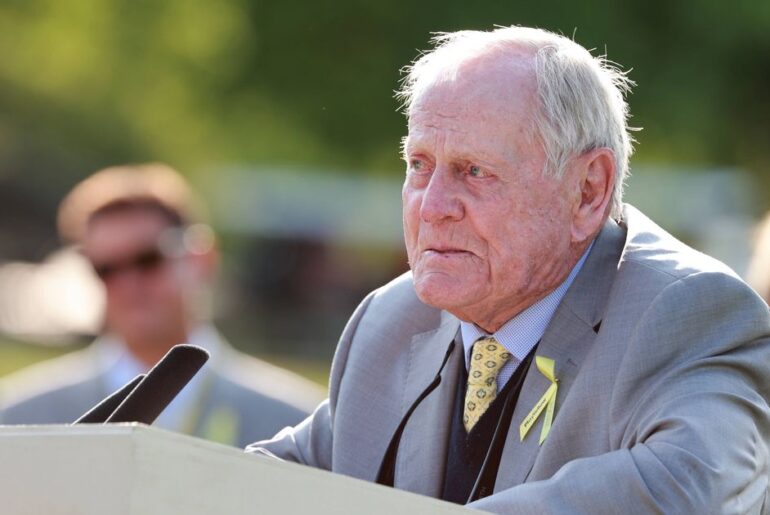The R&A and St Andrews Links Trust have confirmed major changes to the Old Course ahead of The 2027 Open, including new tees, longer holes, and restored bunkers designed to protect golf’s most iconic test from modern power.
Work starts next week on the Old Course – and any time a spade goes into the turf at St Andrews, golf pays attention.
Ahead of The 155th Open in 2027, the R&A and St Andrews Links Trust have confirmed a programme of “enhancements and restoration” to the Old Course, designed by Mackenzie & Ebert – the go-to team for subtle, historically sensitive tweaks to the game’s great links.
In simple terms: the Old Course is being lengthened. Again.
Six holes – the 5th, 6th, 7th, 10th, 11th and 16th – will be stretched by a total of 132 yards, taking the championship yardage to 7,445 yards. It’s not a huge number in modern terms, but when you’re talking about golf’s most hallowed ground, every yard matters.
Why it’s happening
This move won’t surprise anyone who’s watched pros dismantle the Old Course in recent years. Following a low-scoring Alfred Dunhill Links Championship in 2017, where Tyrrell Hatton triumphed on 24-under, Gary Player summed up what many were thinking.
“It’s quite sad to see The Old Course of St Andrews brought to her knees by today’s ball and equipment,” said the outspoken South African.
And he wasn’t alone in sounding the alarm. Ian Woosnam recently went one step further, suggesting The Open might need a different home altogether.
“Why don’t you keep St Andrews Old as a souvenir, as history, and build another golf course on the side of it?” he pondered. “Make a golf course specifically for The Open and play it there every year like The Masters?”
That’s the tension at the heart of this: should golf’s most iconic course adapt to modern power, or should the game adapt to protect courses like this?
The R&A’s long-debated golf ball rollback – set to come into effect on professional tours in 2028 – is meant to do exactly that, clawing back some of the distance explosion that’s left classic venues vulnerable. But even with the rollback on the horizon, the R&A clearly believes the Old Course still needs a few more yards to hold up against the power of the modern pro.
Chief Executive Mark Darbon said the work “will enhance and restore the challenge of the Old Course in a few key areas,” adding that the approach is “grounded in deep respect for the course’s unparalleled history.”

A carefully managed evolution
The work will be carried out under the banner of refinement and restoration rather than redesign. Mackenzie & Ebert’s plan includes restoring historic playing routes, reworking a few bunkers to bring them back into play for modern professionals, and improving the ageing irrigation system.
Perhaps the most interesting change comes at the 16th, where an old route to the left of the Principal’s Nose and Deacon Sime bunkers will be reopened, with two new bunkers added to tempt and torment the brave.
There’s also some tidying up elsewhere – the 2nd hole’s fairway bunkers will move slightly, the 9th’s Boase’s Bunker will be restored to its more rugged shape, and the Road Hole bunker will be “sympathetically restored” to reduce the sand splash build-up that’s altered its shape over time.
Respecting the past while responding to the present
Neil Coulson, Chief Executive of St Andrews Links Trust, says this is part of a long-running tradition rather than a break with it.
“Every generation has played a part in shaping the Old Course,” he said. “This latest programme continues that long tradition. Our guiding principle is simple: to protect what makes the Old Course so special while ensuring it continues to offer a fair, challenging and enjoyable experience for golfers of every level.”
That’s the tightrope this project has to walk. Golf’s biggest names hit the ball so far now that St Andrews risks being overpowered every time The Open returns. The fairway bunkers that once terrified the best players in the world now sit quietly out of range for the elite.
So, yes, this is about distance. It’s about protecting the challenge – ensuring the Old Course doesn’t become a drive-and-wedge contest when The Open returns in 2027. But it’s also about respect: for history, for architecture, and for the everyday golfers who tee it up there every morning, rain or shine.
It’s not the first time
For all the talk of “never changing St Andrews,” the truth is the Old Course has always evolved. Between 1899 and 1905, more than 60 new bunkers were added. Nearly 350 yards were stretched out across the 2000 and 2005 Opens. Even the most recent work in 2015 adjusted greens and regraded contours.
So while “lengthening St Andrews” might sound like sacrilege to some, it’s actually just the next chapter in a 600-year story of adaptation.
The eternal balancing act
The biggest challenge for Mackenzie & Ebert – and for the R&A – isn’t adding yards; it’s preserving the Old Course’s classic magic while keeping it relevant in the modern era. The Old Course is unlike any other championship venue: quirky, flat, timeless, a place where imagination matters more than muscle.
If they can keep that spirit alive while tightening the test for modern pros, then the 2027 Open might just strike the perfect balance.







